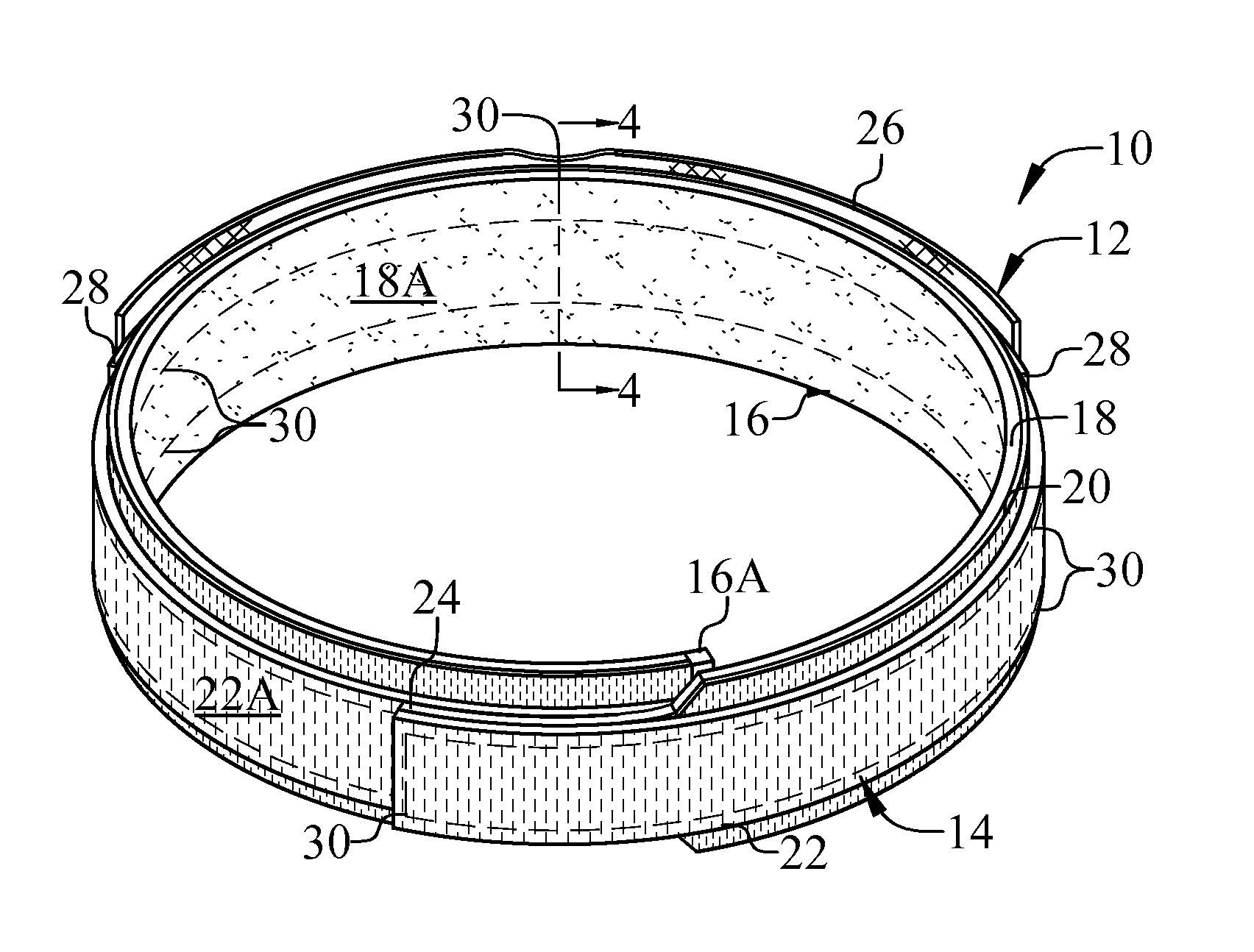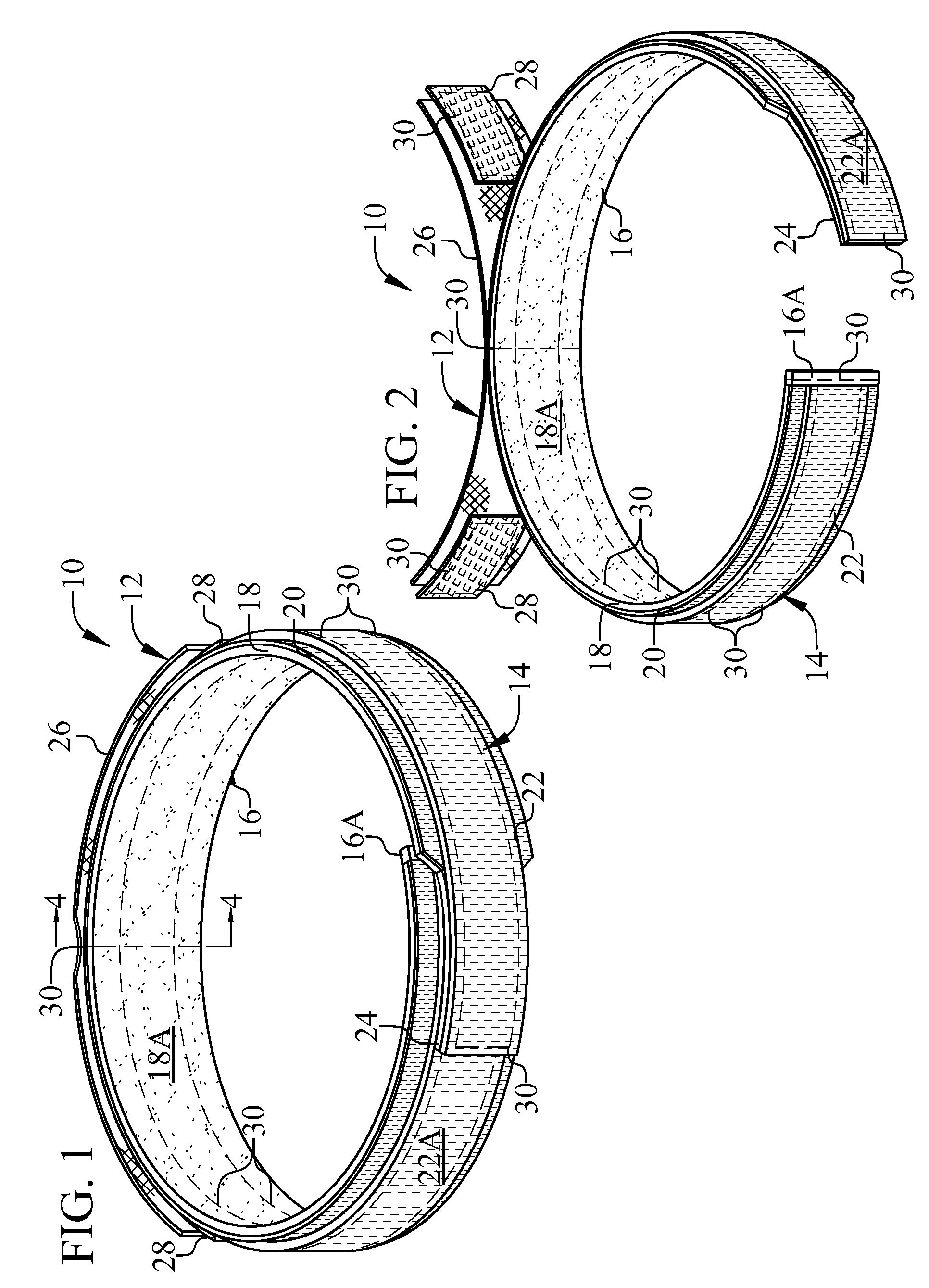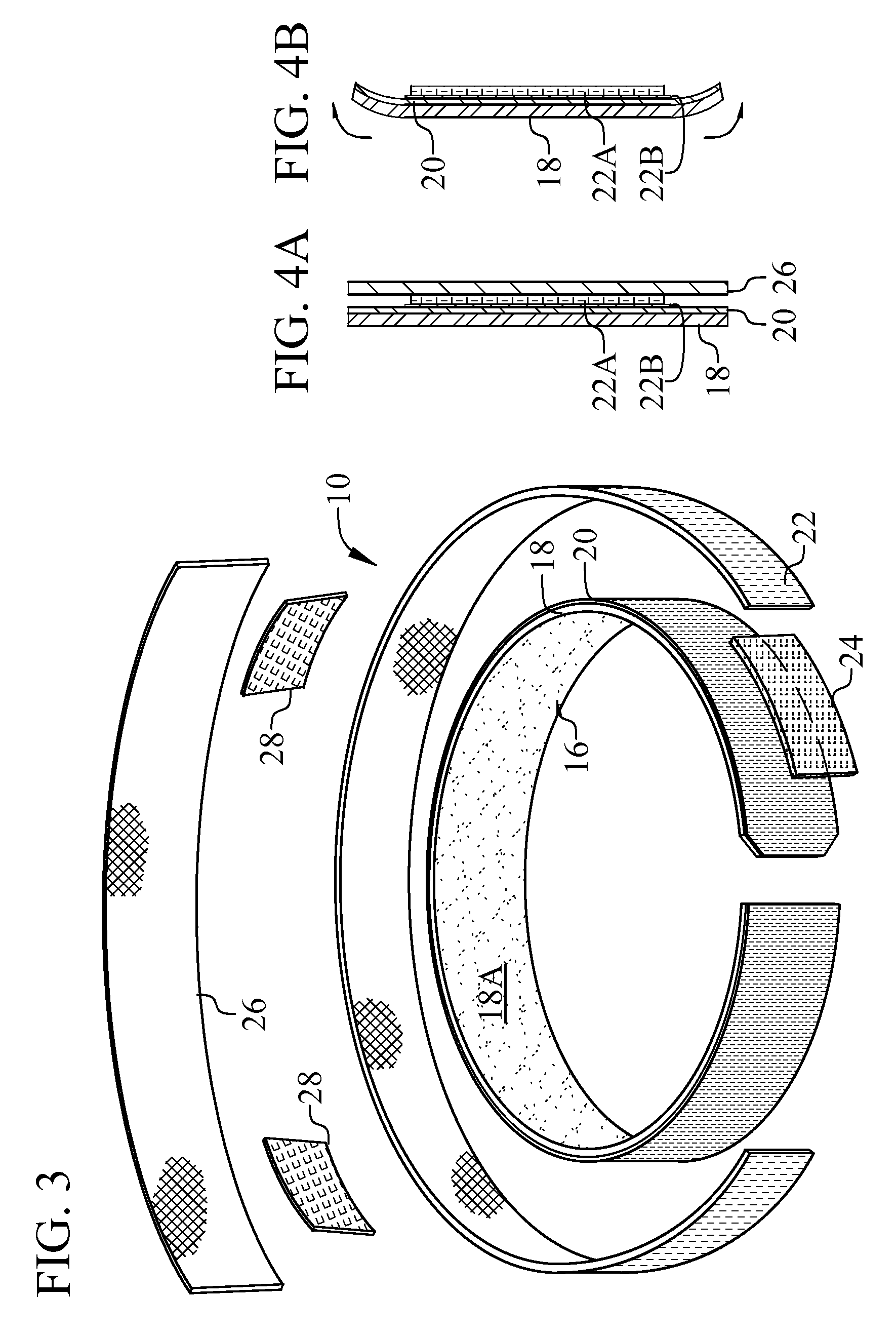Sacroiliac belt and composite structure
a composite structure and sacroiliac belt technology, applied in the field of sacroiliac belts, can solve the problems of skin irritation, lower ph within the joint, otherwise inconvenient or irritating to the user, etc., and achieve the effect of positive moisture wicking characteristics, high friction coefficient or frictional surface characteristi
- Summary
- Abstract
- Description
- Claims
- Application Information
AI Technical Summary
Benefits of technology
Problems solved by technology
Method used
Image
Examples
Embodiment Construction
[0042]Referring now to FIGS. 1-9, there is shown a preferred embodiment sacroiliac belt 10 in accordance with the invention. The sacroiliac belt 10 comprises two independently operable belt elements: a lengthwise elastic outer belt 12 and a lengthwise non-elastic inner belt 14. The inner belt 14 is sized in length to wrap around the user's hips (FIG. 9). The outer belt 12 is sized in length to wrap from the back of the user and engage opposite sides of the inner belt. Hook and loop fasteners in non-cinchable arrangements secure the inner and outer belts in position.
[0043]The inner belt 14 includes an inside elastic bi-laminate 16 and an outside non-elastic strip 22 of loop material (of hook and loop fastener construction). A hook tab 24 (of hook and loop fastener construction) is secured at one end of the inner belt 14, with the hooks facing inwardly for connecting to the outwardly facing loops of the strip 22 when the inner belt is wrapped around the user or otherwise in a closed c...
PUM
 Login to View More
Login to View More Abstract
Description
Claims
Application Information
 Login to View More
Login to View More - R&D
- Intellectual Property
- Life Sciences
- Materials
- Tech Scout
- Unparalleled Data Quality
- Higher Quality Content
- 60% Fewer Hallucinations
Browse by: Latest US Patents, China's latest patents, Technical Efficacy Thesaurus, Application Domain, Technology Topic, Popular Technical Reports.
© 2025 PatSnap. All rights reserved.Legal|Privacy policy|Modern Slavery Act Transparency Statement|Sitemap|About US| Contact US: help@patsnap.com



